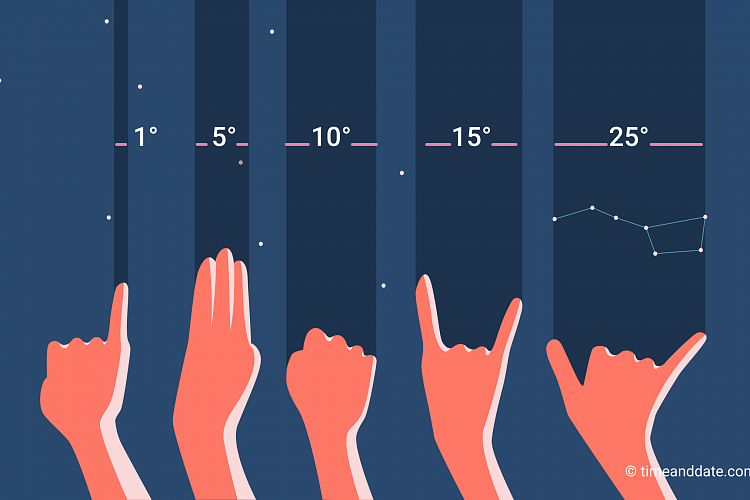
Minnesota Skies: September 2019
Your local guide to observing celestial objects and events
Published08/30/2019 , by Parke Kunkle & Thaddeus LaCoursiere
Jupiter still gleams brightly in the southwest sky in the early evening. Look for it next to Moon on September 5. Now is also a good time to look for Saturn, which will be left of Moon on September 7. Its rings are tilted nicely toward Earth so use a telescope if you can or come to our free September 6 Star Party to enjoy this ringed wonder through one of our high powered telescopes.
Around 8:30 pm check out the bright star Vega almost directly overhead. It is the second brightest star in the sky this month, out-shined slightly by reddish Arcturus above the western horizon. Vega is part of the constellation Lyra which is difficult to see unless you have dark skies. It is also part of the asterism called the Summer Triangle consisting of Vega, Deneb about 25 degrees ENE of Vega and Altair about 35 degrees SSE of Vega.
Constellations and asterisms are both patterns of stars. Briefly, constellations help identify a region of sky and are recognized by the International Astronomical Union. No matter what you call the patterns, enjoy stargazing in our beautiful skies.
 Fall Equinox
Fall Equinox
Twice a year, the Sun shines directly on the equator, causing nearly equal lengths of day and night—this is an equinox.
The Earth experiences seasons due to its tilt (23.5 degrees from vertical). The north pole (northern rotational axis) is closely aligned with the north star Polaris all year long. As the Earth orbits the Sun, the axis stays aimed at the north star and the Earth’s relative tilt toward or away from the Sun causes the changes in our seasons.
The fall equinox marks the Earth’s halfway position between summer and winter solstices. The Sun will appear
There’s so much more to see! Use our Minnesota Skies sky map to help guide your sky watching!
Featured image: Saturn
This illustration shows NASA’s Cassini spacecraft in orbit around Saturn. Cassini made 22 orbits that swooped between the rings and the planet before ending its mission on Sept. 15, 2017, with a final plunge into Saturn. Credit: NASA/JPL.
Lunar Highlights
September 5—First Quarter Moon
The Moon is one quarter of its way through its orbit around
the Earth, which makes half the Moon illuminated and half
dark from our perspective.
September 13—Full Moon
The Moon is located on the opposite side of the Earth as the
Sun and the side we see is fully illuminated.
September 21—Last Quarter Moon
This phase occurs when the Moon is three-quarters of the
way through its orbit around the Earth.
September 28—New Moon
The Moon is located on the same side of the Earth as the Sun
and is not visible in the night sky. This is the best time of the
month to observe faint objects like galaxies and star clusters
because there is no moonlight to interfere.
Deep Sky Objects
The summer is starting to fade and we’re facing the start of short days and long nights, giving us time to observe a wide variety of objects.
Start with the constellation of Ophiuchus, the overlooked 13th constellation of the zodiac and Serpent Bearer. The head of Ophiuchus is the bright star Rasalhague, which scientists have confirmed is actually a binary star system with two stars orbiting around each other every eight years. The larger of the two stars is the one we see in our sky, and Rasalhague is rotating incredibly quickly at 240 kilometers per second (over 500,000 miles per hour!) This rotation—120 times faster than our Sun—causes Rasalhague’s equator to spread out and its north and south poles to compress, giving it a shape like a balloon being pressed together by your hands.
Closer to the southern horizon, you can find another wide object. It’s only one one-hundredth the width of Rasalhague, but it’s far more beautiful: the planet Saturn. The famous rings of Saturn cover a vast 280,000 kilometers: 22 times the diameter of the Earth, and almost one light second across! Saturn can be found near the grouping of stars known as the Teapot. Look near the southern horizon for seven bright stars arranged into its eponymous shape.


